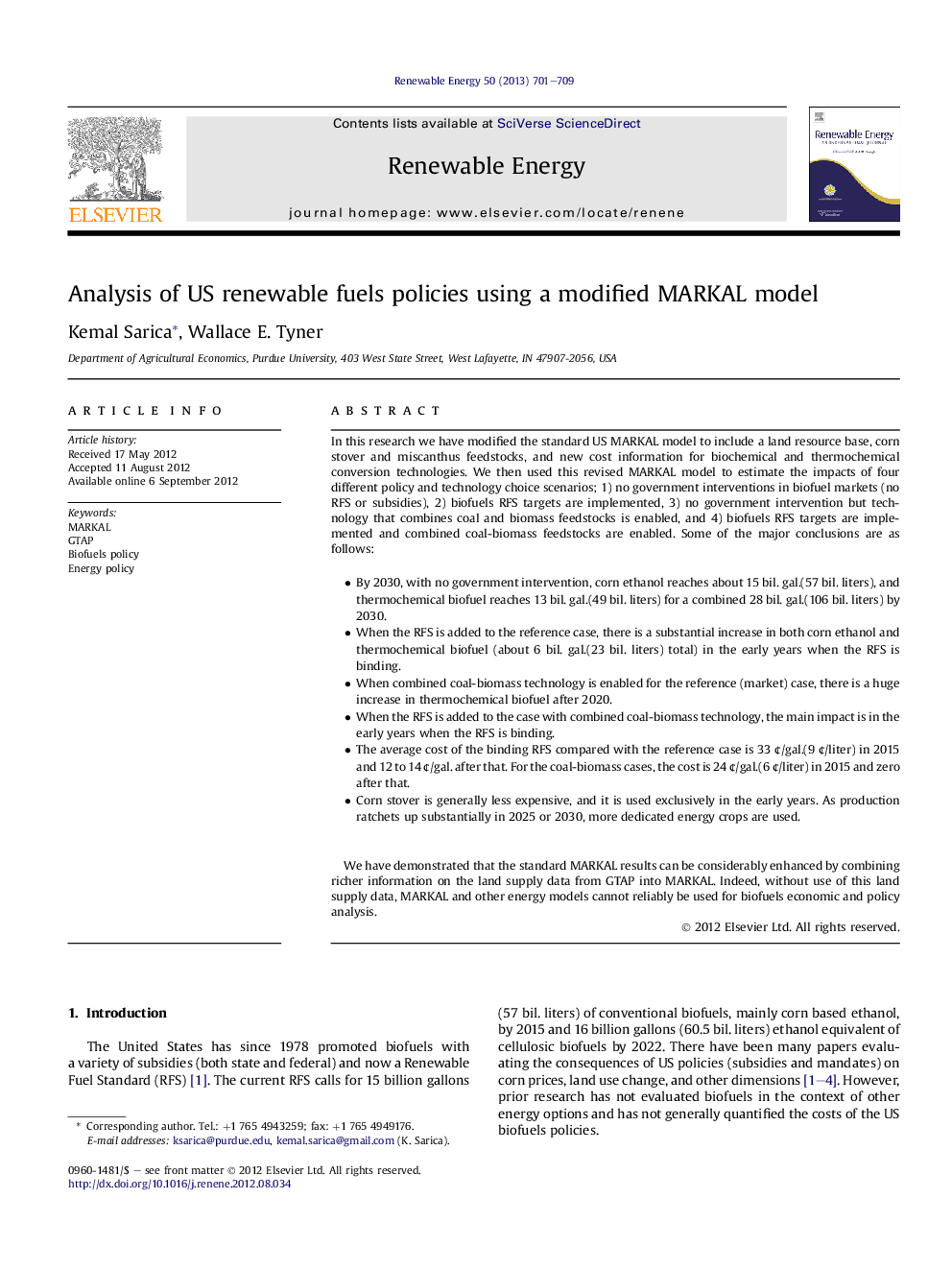| کد مقاله | کد نشریه | سال انتشار | مقاله انگلیسی | نسخه تمام متن |
|---|---|---|---|---|
| 300428 | 512480 | 2013 | 9 صفحه PDF | دانلود رایگان |

In this research we have modified the standard US MARKAL model to include a land resource base, corn stover and miscanthus feedstocks, and new cost information for biochemical and thermochemical conversion technologies. We then used this revised MARKAL model to estimate the impacts of four different policy and technology choice scenarios; 1) no government interventions in biofuel markets (no RFS or subsidies), 2) biofuels RFS targets are implemented, 3) no government intervention but technology that combines coal and biomass feedstocks is enabled, and 4) biofuels RFS targets are implemented and combined coal-biomass feedstocks are enabled. Some of the major conclusions are as follows:
• By 2030, with no government intervention, corn ethanol reaches about 15 bil. gal.(57 bil. liters), and thermochemical biofuel reaches 13 bil. gal.(49 bil. liters) for a combined 28 bil. gal.(106 bil. liters) by 2030.
• When the RFS is added to the reference case, there is a substantial increase in both corn ethanol and thermochemical biofuel (about 6 bil. gal.(23 bil. liters) total) in the early years when the RFS is binding.
• When combined coal-biomass technology is enabled for the reference (market) case, there is a huge increase in thermochemical biofuel after 2020.
• When the RFS is added to the case with combined coal-biomass technology, the main impact is in the early years when the RFS is binding.
• The average cost of the binding RFS compared with the reference case is 33 ¢/gal.(9 ¢/liter) in 2015 and 12 to 14 ¢/gal. after that. For the coal-biomass cases, the cost is 24 ¢/gal.(6 ¢/liter) in 2015 and zero after that.
• Corn stover is generally less expensive, and it is used exclusively in the early years. As production ratchets up substantially in 2025 or 2030, more dedicated energy crops are used.We have demonstrated that the standard MARKAL results can be considerably enhanced by combining richer information on the land supply data from GTAP into MARKAL. Indeed, without use of this land supply data, MARKAL and other energy models cannot reliably be used for biofuels economic and policy analysis.
► Bottom-up energy market model (MARKAL) used to assess the US biofuels policy.
► Biofuels land supply data generated using GTAP and transferred to the MARKAL framework.
► Significant amount of biofuels can be produced without policy support, by 2030.
► Coal-biomass thermochemical technology will increase the biofuel production after 2020.
► Renewable Fuel Standard affects the short to medium term biofuels production level.
Journal: Renewable Energy - Volume 50, February 2013, Pages 701–709